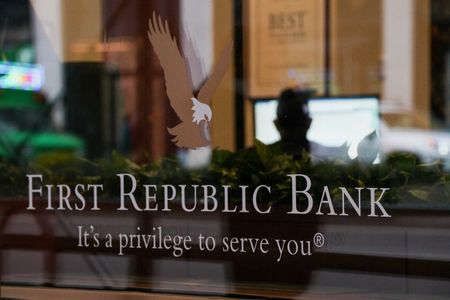This post was originally published on this site

Investing.com — JPMorgan Chase & Co (NYSE:JPM) and Bank of America Corp (NYSE:BAC) lead a group of big banks injecting a dose of confidence in First Republic Bank (NYSE:FRC) in the form of $30 billion in deposits.
The move caps a wild day of stock swings for First Republic, which has been hammered by uncertainty since last weekend’s collapse of SVB Financial’s Silicon Valley Bank.
In a statement, the group of large U.S. banks said: “Together, we are deploying our financial strength and liquidity into the larger system, where it is needed the most.”
In the arrangement, Bank of America, Citigroup Inc (NYSE:C), JPMorgan Chase and Wells Fargo & Company (NYSE:WFC) announced today they are each making a $5B uninsured deposit into First Republic Bank. Goldman Sachs Group Inc (NYSE:GS) and Morgan Stanley (NYSE:MS) are each making an uninsured deposit of $2.5B, and BNY Mellon (NYSE:BK), PNC Bank (NYSE:PNC), State Street (NYSE:STT), Truist (NYSE:TFC) and U.S. Bancorp (NYSE:USB) are each making an uninsured deposit of $1B, for a total deposit from the 11 banks of $30B.
Earlier reports said San Francisco-based First Republic is considering several different options, adding that there is still the potential for a full takeover although this path remains unlikely.
First Republic shares surged nearly 10% during Thursday’s session. Jim Herbert, executive chairman, and Mike Roffler, CEO of First Republic Bank said in a joint statement: “Their collective support strengthens our liquidity position, reflects the ongoing quality of our business, and is a vote of confidence for First Republic and the entire U.S. banking system. In addition, we want to share our sincerest thanks to our colleagues, clients, and communities for their continued and overwhelming support during this period.”
First Republic’s credit rating was sharply downgraded by S&P Global Ratings to “junk” status earlier this week, while Moody’s said it was placing the bank under review for a potential downgrade.
Both agencies flagged growing risks of increased deposit withdrawals for the bank, and that it faces increased pressure on its profitability if it resorts to more expensive funding options than deposits.

